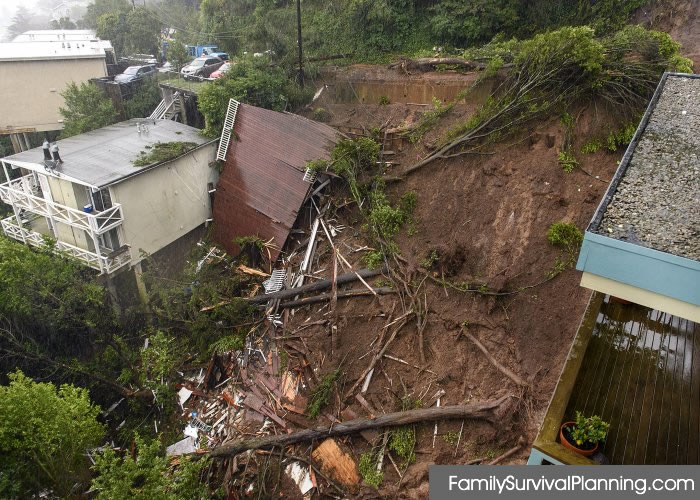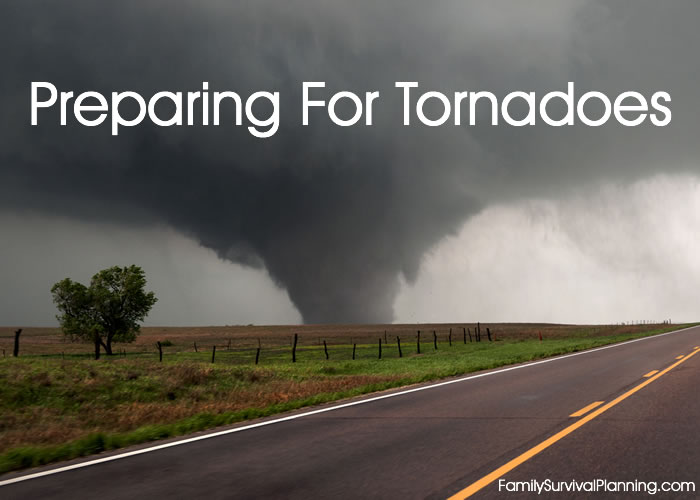- HOME
- Natural Disaster Survival
- Preparing for Mudslides
Preparing For Mudslides
 Preparing For Mudslides - Mudslides are a serious natural disaster. Southern California has been hit hard more than once. Is your area at risk for mudslides? Find out how to prepare before, during and after.
Preparing For Mudslides - Mudslides are a serious natural disaster. Southern California has been hit hard more than once. Is your area at risk for mudslides? Find out how to prepare before, during and after.Source: Accuweather.com
Mudslides are a serious natural disaster. Southern California has been hit hard more than once.
In February 2018, what's known as an atmospheric river, brought more snow to northern California in a day than parts of New England have seen all winter. Redding, a city in California’s Central Valley, got more than 13 inches of snow.
Invest in emergency food storage now and enjoy peace of mind for the next 25 years. Don't miss out on the savings!
After back-to-back years of expansive, record-breaking wildfires, many areas of the state are denuded of the vegetation that would ordinarily anchor the soil in place. But even areas that haven’t seen fires recently are vulnerable. Sausalito, California, saw five inches of rain in 24 hours, which triggered a mudslide in the hilly Bay Area town and forced people to evacuate at least 50 homes.

Source: Accuweather.com
How to Prepare
- Have an emergency kit with food, water, and first aid supplies ready.
- Make an emergency communications plan with your family and have a meeting place if you get separated.
- What are the risks to your home based on its location. Is it on a cliff face? Is it at the bottom of a steep slope? Is it near natural drainage areas or erosion valleys?
- Create passageways and retaining walls for mud and debris to flow around your home. Take note of the direction of the flow as you could be putting your neighbors at risk and might be liable for damages.
- Check with your home insurance company to see what is covered in the event of a mudslide.
- Plant ground cover around your property to help hold the soil together.
Watch for Warning Signs
- Check your property for small slides or leaning trees. The ground could be about to give way.
- Notice if doors and windows are sticking for the first time.
- Inspect for new cracks in brick, plaster, or foundations.
- Broken underground utility lines may show up as a soggy spot on your lawn or sinking ground.
- Pay attention to usual sounds like cracking trees, or large rocks knocking together.
- Notice any bulging at the base of a slope.
- Inspect for collapsing pavement or sidewalks pulling away from the ground.
- If you are told to evacuate just do it. It could save your life!
What To Do During a Landslide
- Stay awake. Many deaths happen when people are sleeping. One California mudslide happened at night.
- Have a battery-powered or hand-crank radio to listen for reports of heavy rainfall.
- Listen for odd sounds that could indicate moving debris.
- Get out of the path of the mudslide as quickly as possible. If mud is coming towards you go in the opposite direction. Look both ways before crossing a street or bridge as it can quickly become a river of mud.
- Stay away from rivers or low valleys. The mud will flow down towards the valley.
- If you are near a stream watch for changes in the water's flow or color. Muddy water could be a sign of trouble upstream. Move away from the area quickly.
- Curl into a tight ball and protect your head if escape is not possible.
After a Landslide
- Go to a designated public shelter if you have been told to evacuate or you feel it is unsafe to remain in your home. Text SHELTER + your ZIP code to 43362 (4FEMA) to find the nearest shelter in your area (example: shelter 12345).
- Stay away from the slide area. There may be danger of additional slides.
- Listen to local radio or television stations for the latest emergency information.
- Watch for flooding, which may occur after a landslide or debris flow. Floods sometimes follow landslides and debris flows because they may both be started by the same event.
- Check for injured and trapped persons near the slide, without entering the direct slide area. Direct rescuers to their locations.
- Look for and report broken utility lines and damaged roadways and railways to appropriate authorities. Reporting potential hazards will get the utilities turned off as quickly as possible, preventing further hazard and injury.
- Check the building foundation, chimney, and surrounding land for damage. Damage to foundations, chimneys, or surrounding land may help you assess the safety of the area.
- Replant damaged ground as soon as possible since erosion caused by loss of ground cover can lead to flash flooding and additional landslides in the near future.
- Seek advice from a geotechnical expert for evaluating landslide hazards or designing corrective techniques to reduce landslide risk. A professional will be able to advise you of the best ways to prevent or reduce landslide risk, without creating further hazard.
Are you aware if your area is at an increased risk of a mudslide due to heavy rains or fires? California is not the only place at risk.
Utah has had mudslides due to fast melting snow in the spring, which quickly causes rivers to overflow their boundaries. Any home built close to a river is at risk.
The midwest has tremendous amounts of snow most winters and, at times, severe pounding rain. Although most of the midwest is fairly flat, mud rivers do form and wash away everything in their path.
Sources: https://www.accuweather.com/en/weather-news/mudslide-hits-homes-and-forces-evacuations-in-sausalito-california/70007447
https://www.ready.gov/landslides-debris-flow
What do you think?
I’d love to hear what you have to say in the comments.














